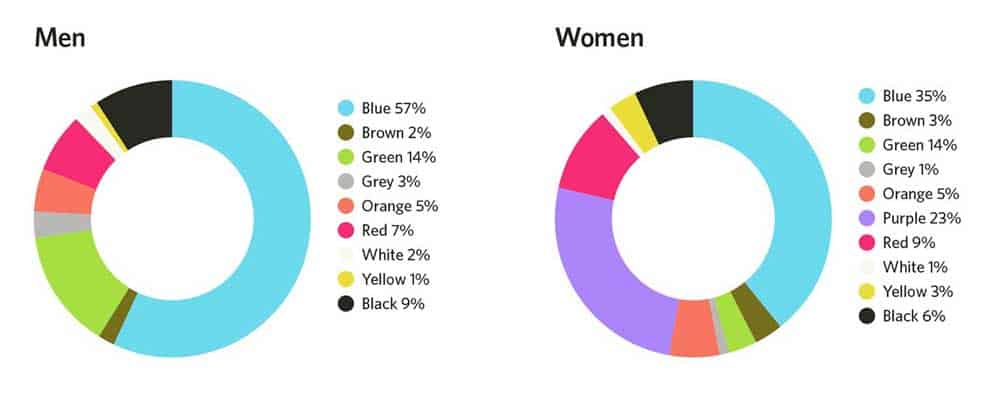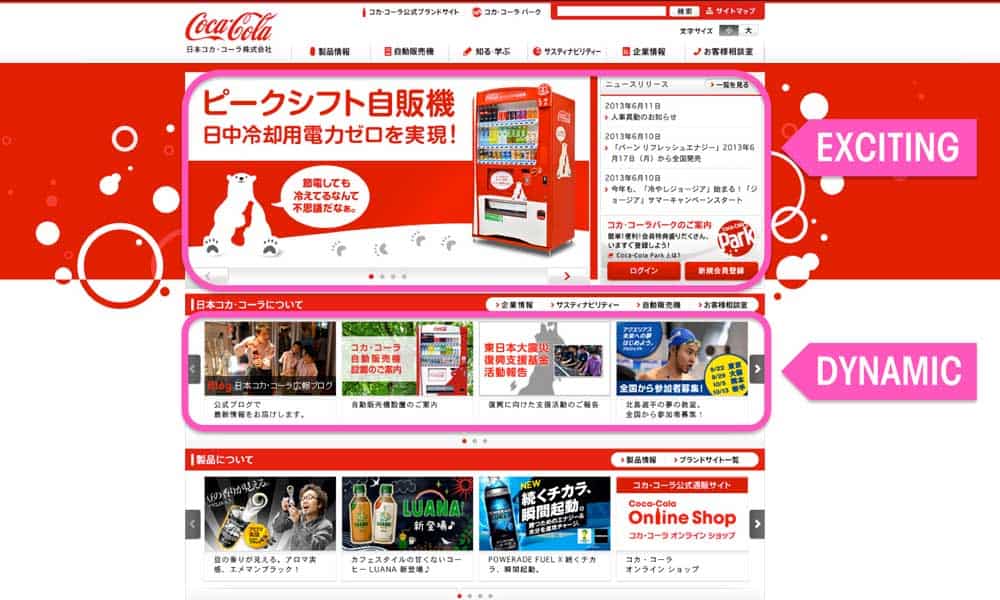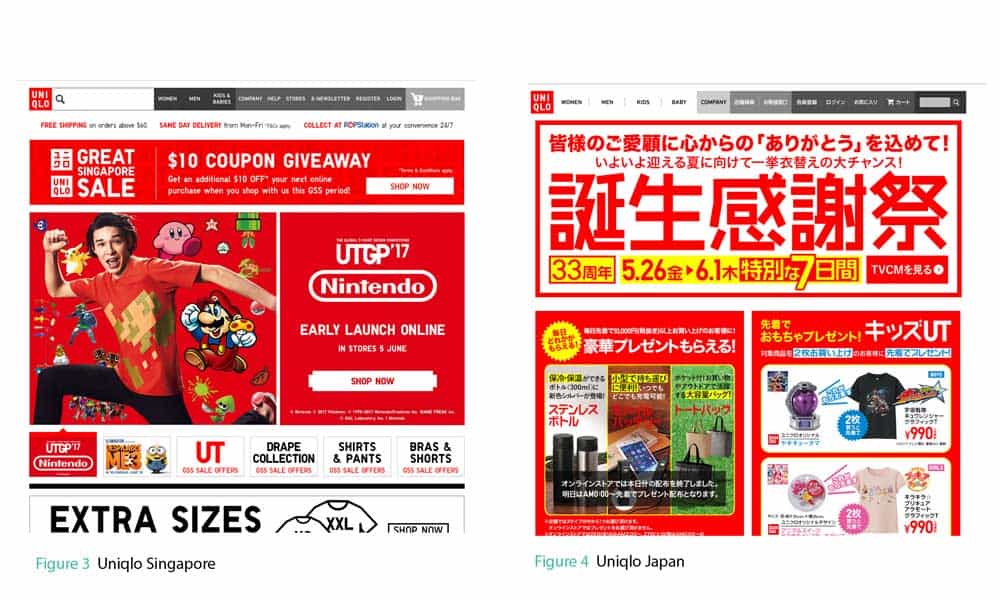
26 Nov How Can Cross-Cultural Design Impact User Experience?
How Can Cross-Cultural Design Impact User Experience?
It is not uncommon to see major online business brands having their websites designed with local attributes.
It all started way back in 1999 when the then leading auction site eBay, to have a market presence in Japan, built an entirely new website in the Japanese language.
But in spite of this effort to become local in a foreign market, eBay was unsuccessful in rolling over the competition just because it lacked in understanding and knowledge of Japanese culture and the way things work in that market.
When you don’t understand the cultural differences for a different market in comparison to your home, your website or online store may need to pull back.
So, cultural influences matter for excellent website design targeting multiple several geographic locations and their people.
The app developers and web designers equally should give importance to these local and culture-specific differences.
When a website or app design consciously addresses these cross-cultural differences, we call it cross-cultural design.
In What Ways Does Cross-Cultural Design Impact Decisions?

All over the world, the behavioural patterns and interests of people largely depend on the culture they have born and brought up with.
This is why, for design decisions, cultural attributes matter a lot.
Here we are going to explain the key ways culture impacts design decisions.
Power Distance in Design

In certain societies where the common man enjoys proximity with the power of their time, the app and website design will push users less and will look less commercial.
For instance, in Scandinavian countries and some other European countries like The Netherlands, commercial websites provide greater autonomy and control to people.
Most of the activities are carried out by people on their own.
In complete contrast, in authoritarian countries or in societies where a common man is always kept away from the power, the app or website design tends to be more commercial with many pushing elements.
People in these societies are more versed with regular command and action structure, and accordingly, the website design fits in.
Individual vs Mass

In some societies, people tend to focus more on their individual needs and preferences than the collective interest or test.
Wherever social alienation has become a common aspect of the social psyche, people when dealing with any digital interfaces focus more on the “I” than the “We”.
In these societies, people make choices following their interests, likes and dislikes.
The design decisions obviously should cater to these individual choices for these countries.
In societies where social alienation is least dominant and where most people tend to think in terms of the collective interest of the “We” first, the design decisions tend to differ to a great extent.
In these countries, people make buying decisions mostly based upon their collective interest and design decisions should serve this mutual interest as a priority.
Masculine vs Feminine

Some societies are inherently masculine in characteristics, and they display their masculine values in almost anything.
In these societies, achievement, heroic deeds, materialistic tendencies and self-assertion dominate public behaviour.
Accordingly, the design decisions should focus on material gains, sense of achievement and heroism.
In contrast, some societies exhibit feminine values more in behavioural patterns and people’s mindset.
These societies are more consensus-driven and give more importance to values such as cooperation, modesty, transparency, care, compassion, quality of life, etc.
Naturally, design decisions should invoke these values.
Local UI Patterns

Every culture has a specific interest or preference for certain design patterns, colour scheme and overall look and feels attributes.
For example, the hamburger is native to the entire Western culture, and consequently, most apps catering to the people there make use of such menu icons extensively.
In contrast, oriental cultures cannot readily associate with the hamburger as it is something foreign to the people there.
Though many countries in the East gradually adopted such menu options, several leading Chinese apps and websites still didn’t embrace these designs.
Chinese apps preferred to use the Compass icon for discovering or searching the menu options.
Managing cross-cultural UI elements

Suppose you have hired a development team existing of developers from a variety of cultures and ethnicities around the world.
Suppose the app is all about personal security and involves features like calling emergency services in case of physical danger and such stuff.
Now, while for someone from New Zealand and someone from Turkey or the Middle East, the app features and security contexts will be different.
This is where cross-cultural design UI elements come in.
Now when you need to build the wireframe and decide about the entire user flow, you need to take into consideration every aspect of the user interaction and visual elements.
Let’s take into account a few key aspects of UI elements and how cross-cultural design insights play a role in developing them.
- Alphabets: If you are delivering an app for the global audience instead of building several app versions for different regions, you cannot use Cyrillic or Chinese keyboard. If you want your app to be culturally sensitive for a specific regional audience, you need to take the user experience of particular regions into consideration.
- Tools: The UI designers worldwide can either depend on the most sophisticated design and sketching tools like that of Adobe or can decide to sketch their app prototype or wireframe on their own. Sketching the wireframe has its advantage though for a very general understanding of the design elements in a fast-paced manner using tools can be a great alternative. When using design tools also you should keep the differences in mind. For example, many fonts in Adobe Photoshop can be converted into Russian while with Sketch tool this possibility is minimal.
Using Local Text and Terms
One of the most significant and most prominent areas where cross-cultural design differences have the most notable presence is the use of text and local terms.
Even though for a global audience, your website is using English, there are several regional differences for designating the same thing.
What Brits call “sweets”, is called “candy” by Americans and “lollies” by Australians.
So, to make our text copy sound more local and culture-specific, you may need to fine-tune the website or app content with colloquial terms and words.
The same “temporary accommodation” in one country can be called “serviced apartment” in another.
Not taking care of these local terms means losing business due to misunderstanding.
Understanding the Differences in User Interaction

Cultural differences also refer to typical user behaviour in specific locations or countries.
The same button can invoke different reactions from different countries.
Some countries may need much content and design elements to push users to take decisive actions while in some countries; a minimalist design can work better.
For example, the landing page of the American site of the same company can have a cleaner look and feel with just a single actionable button.
In contrast, the Indian or Chinese version of the landing page may boast of a lot of design elements, banners, ads and multiple buttons.
Such design decisions are based upon the online behaviour patterns of the users.
Understand Users with Both Quantitative and Qualitative Data

Finally, for understanding local users and accordingly making the design culturally sensitive requires dealing with both quantitative and qualitative data.
As a marketer, you can be successful with your mobile app in a particular region while in other areas your app cannot convert a dime worth of a business.
Thus has been the case with so many mobile apps.
To unveil the reasons for failure in a particular region when you dig into the data, you need to take into consideration both volumes of user data and specific user insights.
To make viable quantitative and qualitative user research by digging into various facets of user data, you need to carry out user interviews, usability tests, researching Google Analytics data, heatmaps, user session recordings, and academic research like studying white papers, user behaviour reports and publications.
With qualitative and quantitative user research, you can address the specific shortcomings in design.
For example, if the user research is indicating that users simply because of lacking trust is not opting for your app, you can boost trustworthiness by incorporating customer reviews, trust badges, and more well-informed copy.
Even if you have a general idea about the local culture of a region, your design decisions should not entirely rely on them.
Instead, the quantitative and qualitative research inputs and insights will help you gain insights to stay ahead of the competition with more precise value.
The cross-cultural design approach also helps you managing developers and designers from different cultures.
Conclusion
From the above explanation, it is quite clear that cross-cultural design differences play a havoc role in shaping the perfect design for the local website and app versions.
If you want to make a global footprint for your website and mobile app, there is no better way to do this than creating local versions of your app or website with local cultural attributes.
Author Bio: Juned Ghanchi is a CMO at IndianAppDevelopers, A place to hire app developers in India that offers iOS & Android platform solutions. He has experience in digital marketing, lead generation, social media strategy and implementation.
The post How Can Cross-Cultural Design Impact User Experience? is by Stuart and appeared first on Inkbot Design.


